When it comes to maintaining your property, clear communication with your tenants is essential. A well-structured property maintenance waiver can help outline responsibilities and expectations, ensuring everyone is on the same page. This template serves as a straightforward guide that can be adjusted to fit your specific needs. Ready to streamline your property management process? Dive into the article to learn more!
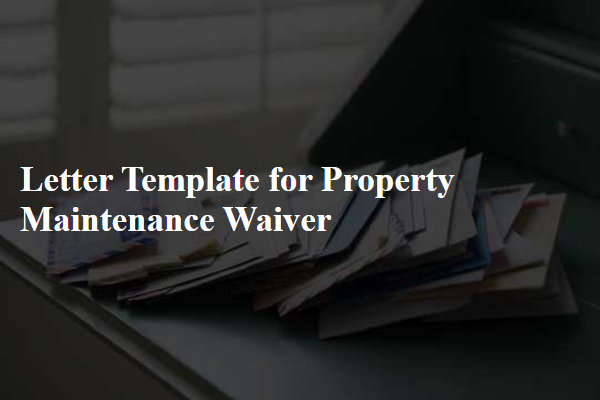
Header and Contact Information
Property maintenance waivers serve as important legal documents that outline the responsibilities of property owners and tenants regarding maintenance issues. Common elements in these waivers include contact information, such as the property address (e.g. 1234 Elm Street, Springfield), tenant names, phone numbers (e.g. (555) 123-4567), and email addresses. Additionally, defining the scope of maintenance responsibilities is crucial, highlighting specific tasks the property owner may waive, such as lawn care or plumbing issues. Including date stamps, signature lines, and clauses pertaining to liability and repair timelines further solidifies the agreement, ensuring clarity and legal enforceability for both parties.
Waiver Statement and Property Details
A property maintenance waiver outlines the agreement between property owners and tenants regarding the responsibilities for upkeep and repairs. This waiver may include specific details about the property, such as the address, square footage, and amenities, alongside key dates such as the lease start and end dates. Important sections include release clauses, indicating that the tenant understands and accepts liability for maintenance or damages, often with references to specific laws or regulations pertaining to property management in the respective jurisdiction. Additionally, potential costs for repairs and the process for notifying the property owner about maintenance issues should be detailed to prevent misunderstandings.
Responsibilities and Obligations
Property maintenance waivers clarify responsibilities and obligations of tenants and landlords. Waivers often outline specific maintenance tasks, such as lawn care, plumbing repairs, and routine cleaning, that tenants must undertake. Property names, such as "Maple Grove Apartments" located in Springfield, may require tenants to manage upkeep based on lease agreements. Waivers typically include details on response times for emergency repairs, which may stipulate a 24-hour response window. Additionally, tenants may be liable for damages resulting from negligence, including water leaks that can lead to mold growth, a serious health hazard. Clarity in these waivers helps prevent disputes and ensures that property standards are maintained effectively.
Assumption of Risk and Liability
Property maintenance waivers, outlining the assumption of risk and liability, serve to protect property owners and managers during maintenance activities. Such documents typically detail the nature of maintenance tasks (e.g., plumbing repairs, electrical work) which can extend to multiple building types, including residential units or commercial spaces, often located in urban areas. Engaging contractors or maintenance personnel (typically requiring licenses and insurance) to complete projects poses potential hazards (like falls, exposure to chemicals) for both the workers and residents. By signing the waiver, participants acknowledge understanding of risks involved and agree to release the property owner from liability in the event of accidents. This legal protection is essential for risk management within property maintenance operations, supporting compliance with local laws and ensuring safety in the workplace environment.
Date, Signature, and Witness Section
Property maintenance waivers serve as essential documents for property owners and tenants. Such waivers often contain important details involving property address, maintenance responsibilities, and terms related to property upkeep. The date section records when the waiver is signed or agreed upon, ensuring clarity regarding the timeline of the agreement. The signature section requires personal identification from all parties involved, verifying their consent to the terms stated within the document. Meanwhile, the witness section provides an area for a neutral third party to affirm the agreement, often including their name, signature, and contact information, which adds an additional layer of legitimacy to the waiver. These elements together ensure accountability, protect rights, and clarify responsibilities concerning property maintenance practices.

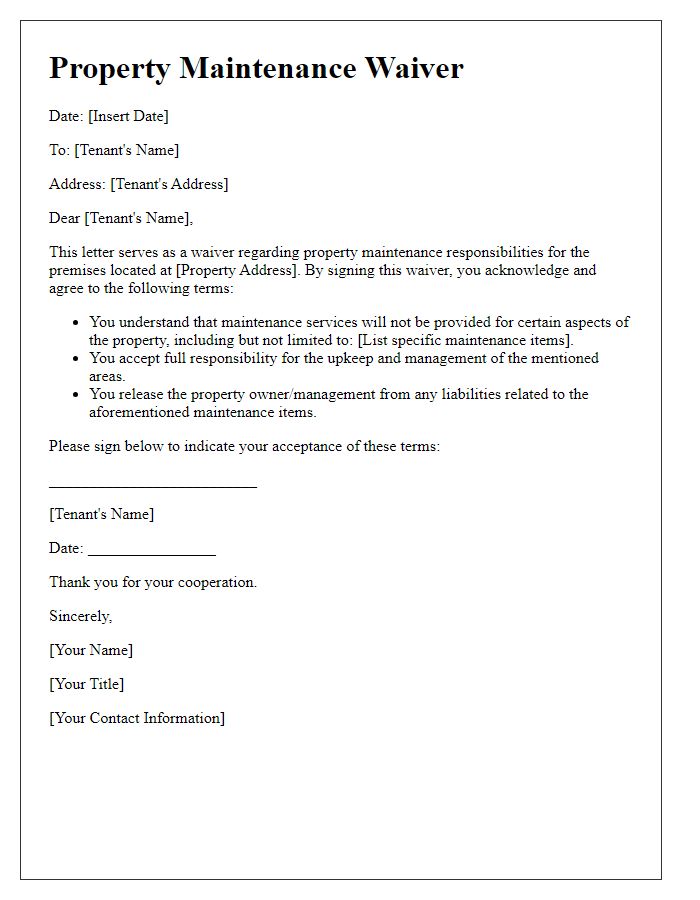
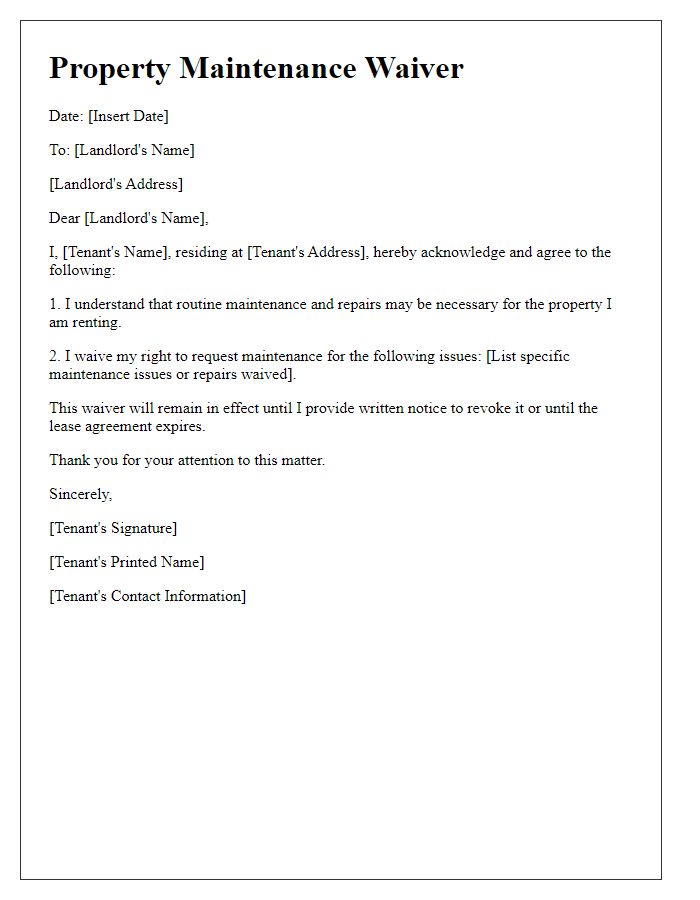
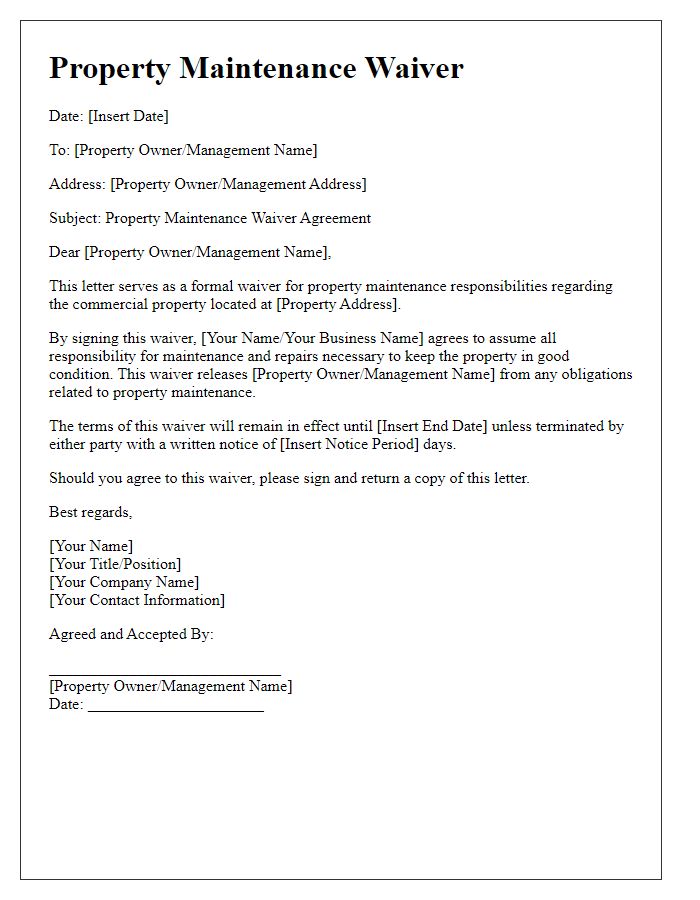
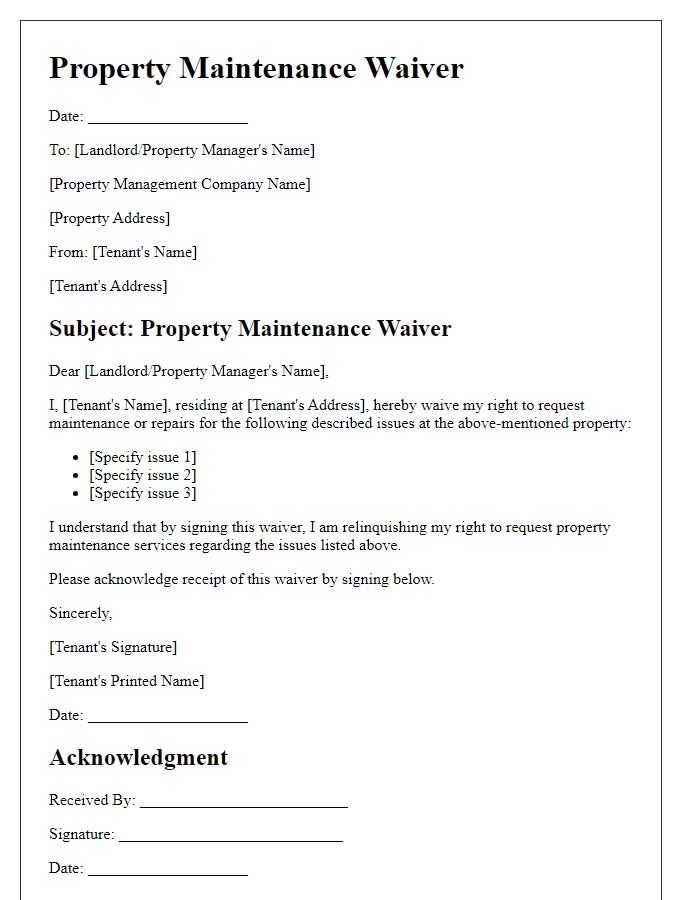
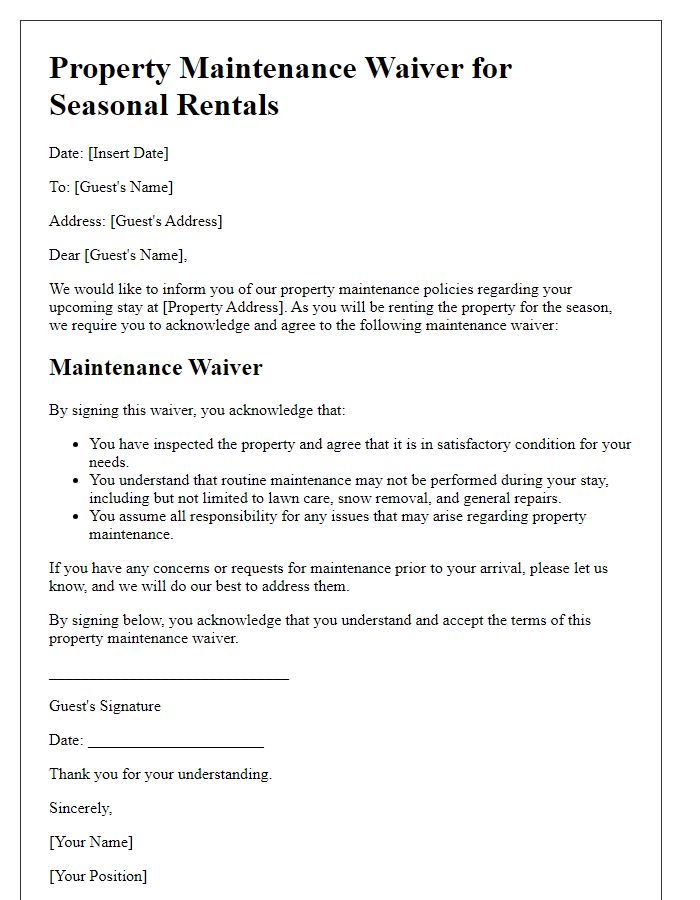
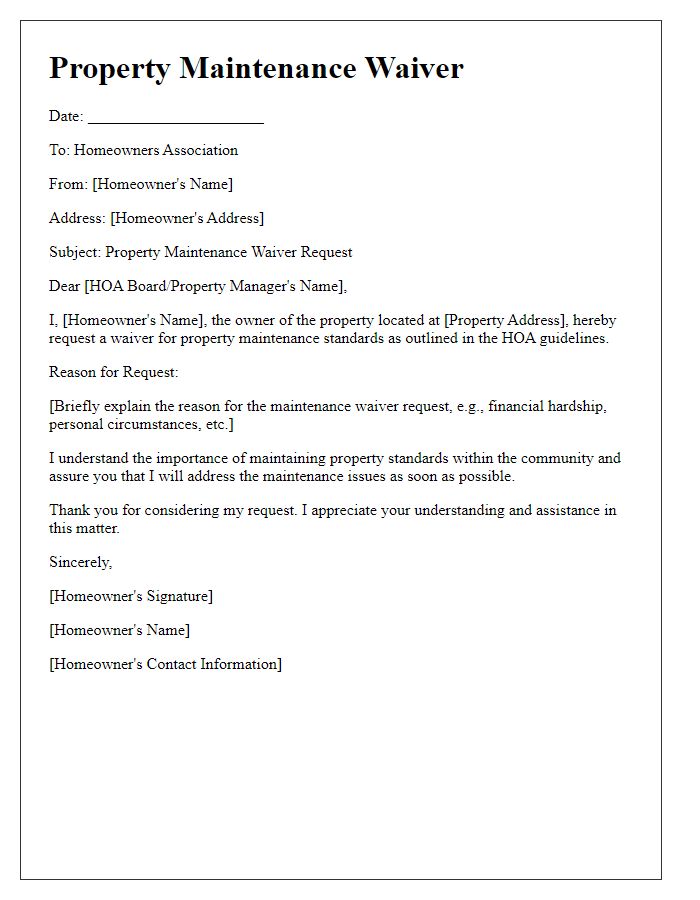
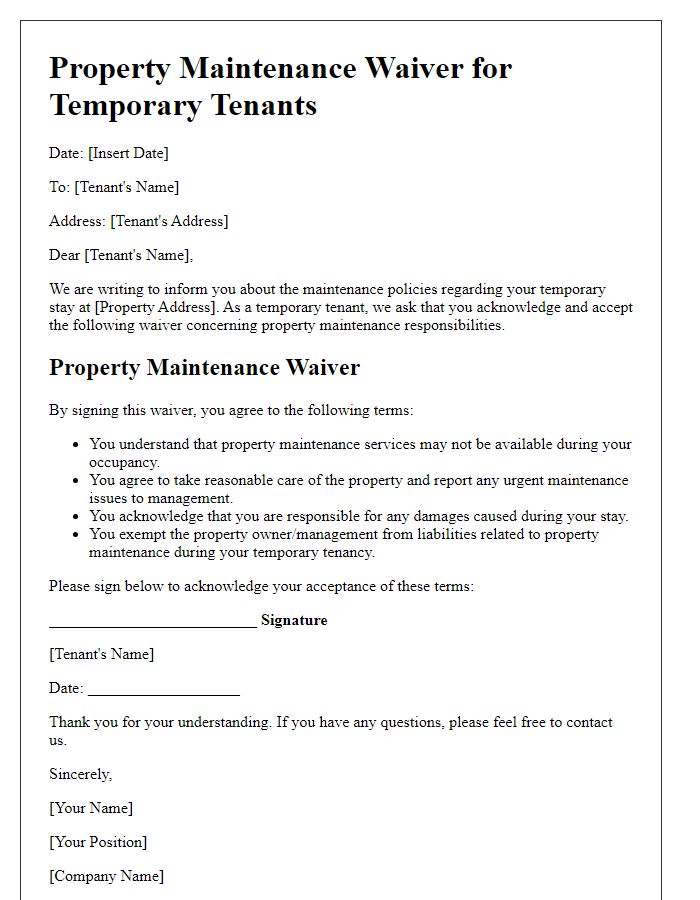
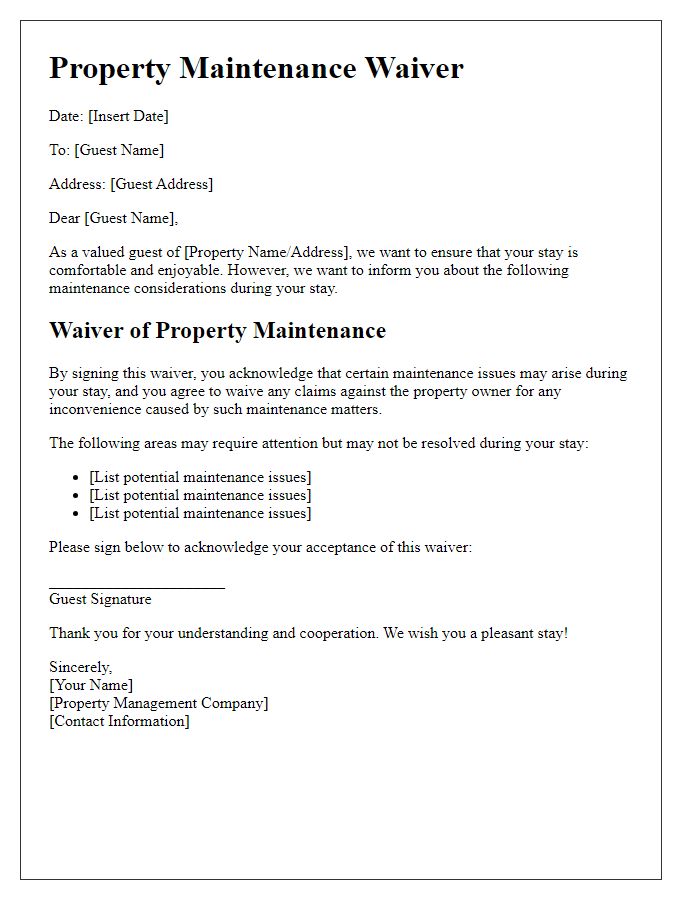
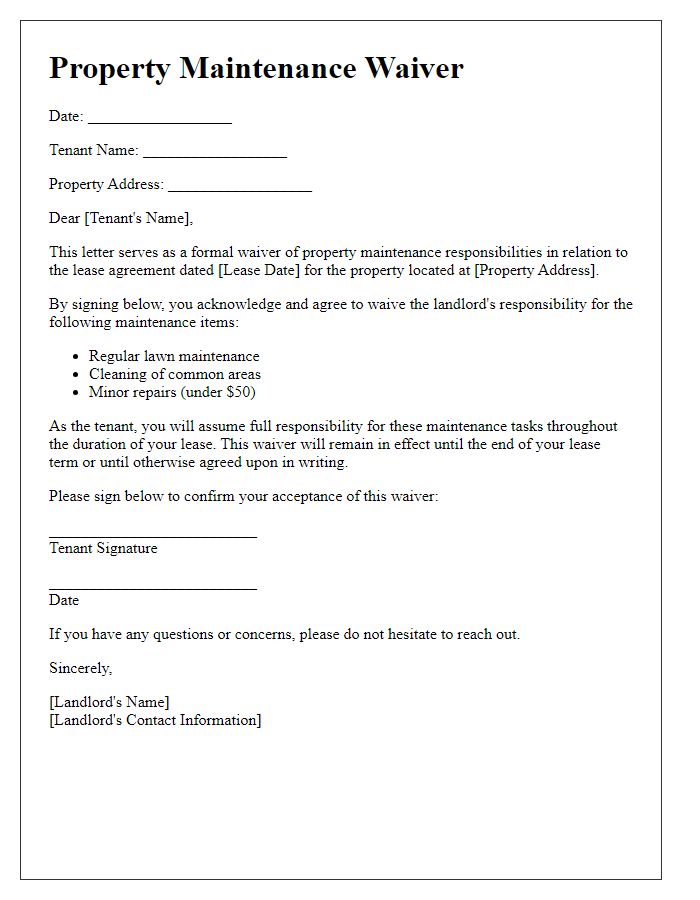
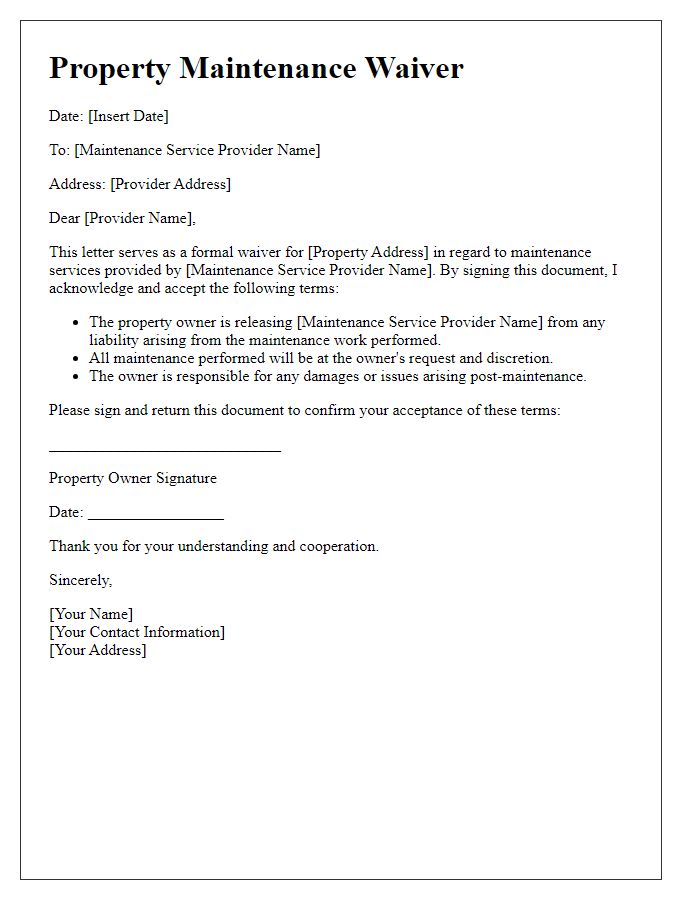

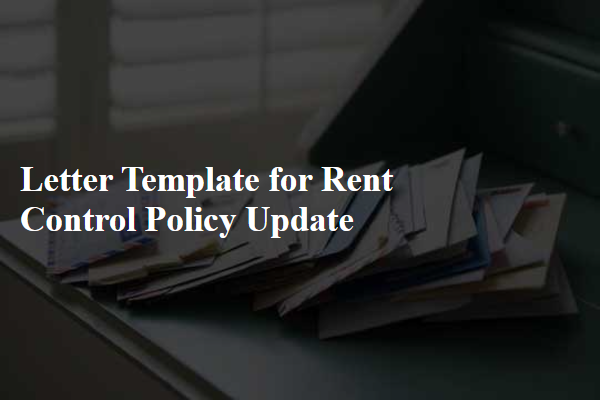

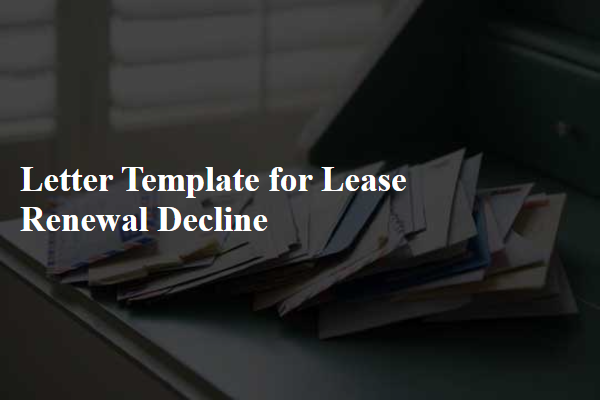
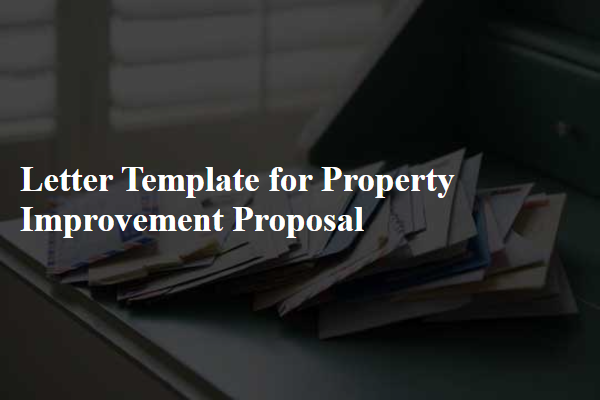
Comments